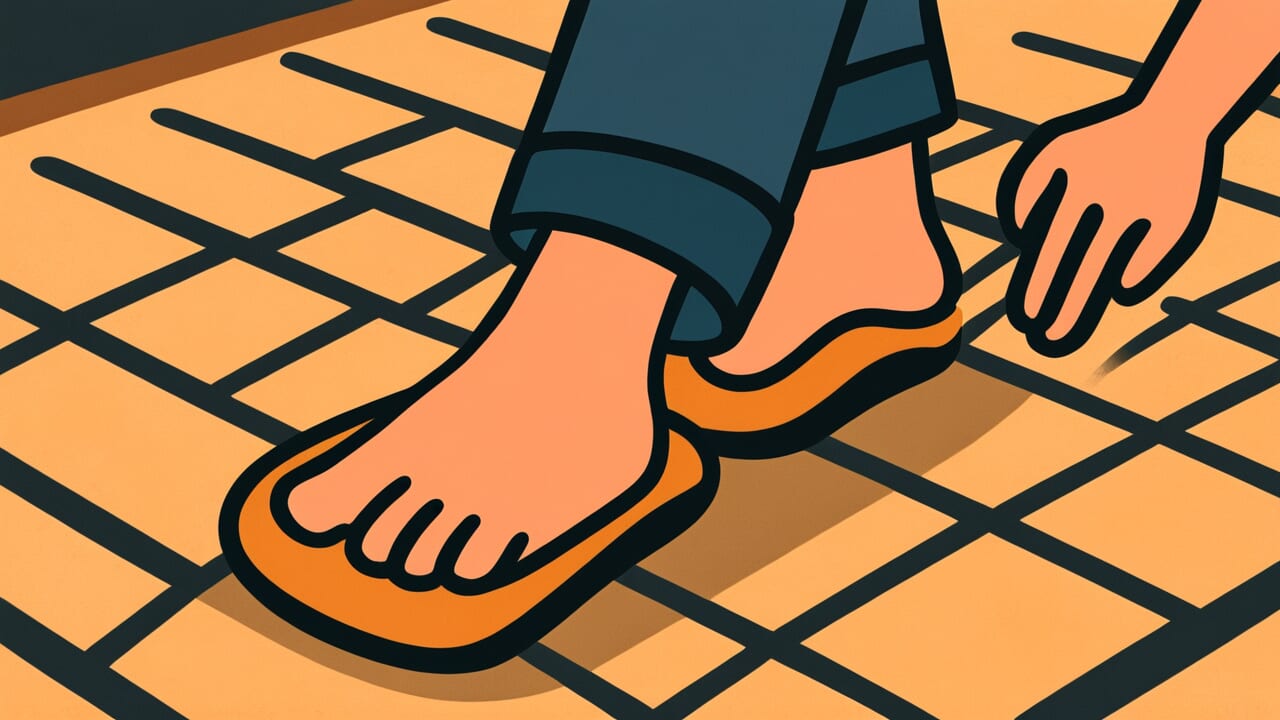How to Read “Step on the right and the left rises”
Migi wo fumeba hidari ga agaru
Meaning of “Step on the right and the left rises”
“Step on the right and the left rises” is a proverb that describes situations where you can’t satisfy both sides at once. When you support one side, the other side falls.
This proverb applies when two conflicting things or demands exist. When you try to satisfy one, the other must be sacrificed.
Common examples include work versus family, quality versus price, or speed versus accuracy. Both matter, but you can’t achieve both at the same time.
Like a seesaw, when you put weight on one side, the opposite side lifts up. This physical image expresses the essence of difficult life choices.
It conveys a dilemma everyone can understand: “Both are important, but I must choose one.”
In modern society, these either-or situations keep increasing. This proverb teaches us wisdom: don’t seek perfection.
Accept the reality that gaining something means losing something else.
Origin and Etymology
No clear written records explain the origin of this proverb. However, we can make interesting observations from its structure.
“Step on the right and the left rises” likely comes from physical movements like seesaws or balance scales. When you apply force to one side, the other side must move in the opposite direction.
This simple physical phenomenon beautifully expresses complex life choices.
Japan has many old proverbs about precarious balance. Examples include “one plank below is hell” and “an inch ahead is darkness.”
This proverb probably emerged from the Japanese people’s delicate sense of balance.
The verb choice “step on” deserves special attention. Rather than simply “push,” using “step on” evokes the actual motion of pressing down with your foot.
This connects to everyday experiences: unstable footing, swaying ship decks, or walking on narrow rice paddy paths.
During the Edo period, common people faced daily situations where choosing one thing meant giving up another. Resources were limited.
Such life wisdom crystallized into this visual, easy-to-understand expression.
Usage Examples
- Increasing the budget improves quality but delays delivery—truly “step on the right and the left rises”
- Strengthening environmental measures slows economic growth; how to overcome this “step on the right and the left rises” situation is the challenge
Universal Wisdom
“Step on the right and the left rises” has been passed down because humans are beings who constantly live through choices.
We all have the desire to “have everything.” We want work and family, money and time, health and pleasure—all perfectly satisfied.
But reality is harsh: gain something, lose something. Humanity has experienced this truth since ancient times.
The deep wisdom of this proverb teaches the importance of accepting that “perfection doesn’t exist.” Step on the right and the left rises.
This isn’t a flaw—it’s the natural state of the world.
What’s interesting is that this proverb doesn’t criticize or encourage giving up. Instead, it promotes calm observation.
The message isn’t “so it’s hopeless” but rather “so think carefully and choose wisely.”
In life, you can’t satisfy everything simultaneously. But that’s not failure.
What matters is the wisdom to discern what to prioritize right now. Step on the right or step on the left?
That choice shapes your life. Our ancestors are asking us: how do we live wisely within this unavoidable trade-off?
When AI Hears This
When you push one side of a seesaw and the opposite side rises, this demonstrates what systems thinking calls “compensating feedback.”
In other words, when you apply force to one part of a system, another part automatically moves in the opposite direction.
What’s interesting is that seesaw-type systems have a hidden variable: “fulcrum position.” If the fulcrum is centered, both sides move equally.
But if the fulcrum is right of center, stepping lightly on the right makes the left jump up dramatically.
This is what systems thinking calls a “leverage point”—an intervention point where small force creates large change.
Most people focus only on the visible “force of stepping on the right.” But what truly matters is the less visible “fulcrum position.”
Even more serious is the “systems trap.” If the right drops and causes problems, you add weight to the left. Now the right jumps up.
Repeating this symptomatic treatment traps the entire system in violent oscillation—a vicious cycle.
In companies, increasing the sales department budget makes the development department unhappy. Next, allocating budget to development weakens sales. This organizational problem is exactly this pattern.
The solution is to move the fulcrum itself or change to a different structure entirely—not a seesaw.
Rather than tinkering with parts, you need thinking that reconsiders the system’s structure itself.
Lessons for Today
What this proverb teaches modern you is a way of living that doesn’t fear the reality that “choices always have costs.”
Instead, turn that reality into strength.
Modern society sells the illusion that “you can have everything.” Perfect work, perfect family, perfect self.
But step on the right and the left rises. This isn’t a flaw—it’s the true nature of the world.
What matters is accepting this reality, then discerning what’s most important to you right now.
Rather than chasing everything half-heartedly, have the courage to decide what to prioritize in this period.
It’s okay to have periods focused on work. It’s okay to have periods treasuring family time. Life is long.
If you’re stepping on the right now, someday you’ll step on the left. How you balance this creates your unique life.
Rather than becoming paralyzed seeking perfection, move forward understanding trade-offs.
The accumulation of those choices enriches your life.



Comments